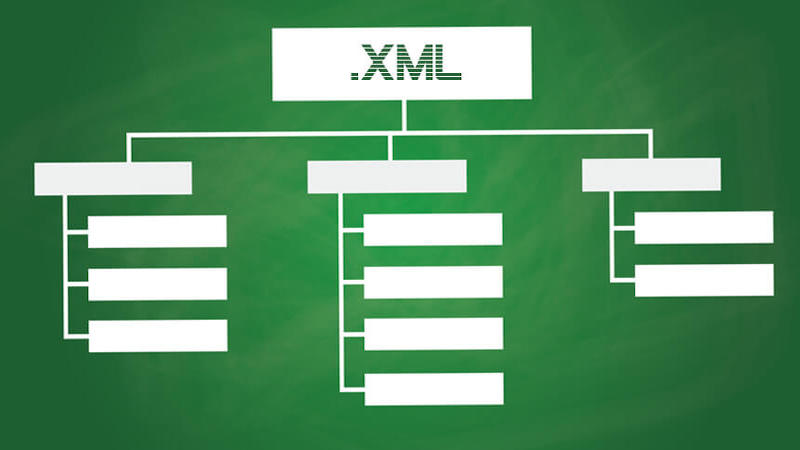Exploring the Best XML Sitemap Format for Enhanced Website Visibility
Best XML Sitemap: In the realm of search engine optimization (SEO), an XML sitemap is a powerful tool that can significantly impact your website’s visibility and indexing on search engines. The XML sitemap format you choose plays a crucial role in how search engines discover and understand your website’s content. In this article, we will delve into the world of XML sitemaps, explore the best format to adopt, and understand how it can optimize your website for better search engine rankings.
Introduction: The Significance of XML Sitemaps
Best XML Sitemap: In the vast digital landscape, getting your website noticed by search engines can be challenging. XML sitemaps act as navigational guides for search engine crawlers, directing them to all the important pages on your website. This improves the likelihood of your content being indexed promptly and accurately.
Understanding XML Sitemaps: A Brief Overview
Best XML Sitemap: An XML sitemap is a file that lists all the URLs on your website, providing essential information about each page, such as its last modification date and importance. This aids search engines in understanding the structure and content of your site.
Benefits of Using XML Sitemaps
Best XML Sitemap: XML sitemaps offer a plethora of advantages. They help search engines discover new or updated content, prioritize essential pages, and improve the crawl efficiency of your website. This ultimately leads to better search engine rankings and enhanced user experience.
Choosing the Right XML Sitemap Format
Best XML Sitemap: When it comes to XML sitemap formats, the most widely accepted and recommended format is the standard XML format. It follows a specific structure that search engines understand, making it easier for them to interpret the information in the sitemap.
XML Sitemap Elements: What to Include
Best XML Sitemap: A comprehensive XML sitemap should include essential elements such as URLs, last modification dates, change frequencies, and priorities. This information guides search engine crawlers in understanding the relevance and importance of each page.
Creating an XML Sitemap: Step-by-Step Guide
Best XML Sitemap: Creating an XML sitemap involves several steps, including identifying the pages to include, organizing them hierarchically, and generating the XML code. Many content management systems offer plugins or tools to simplify this process.
Submitting Your XML Sitemap to Search Engines
Best XML Sitemap: Once your XML sitemap is ready, it’s crucial to submit it to major search engines like Google and Bing. This ensures that search engine crawlers are aware of your sitemap and can efficiently index your pages.
Updating and Maintaining Your XML Sitemap
Best XML Sitemap: As your website evolves, so should your XML sitemap. Regularly update it to reflect new content, removed pages, or changes in priority. This ensures that search engines always have accurate information about your site’s structure.
Common Mistakes to Avoid with XML Sitemaps
Best XML Sitemap: Some common mistakes include submitting incomplete or incorrect sitemaps, using incorrect URLs, neglecting to update the sitemap, and failing to address error notifications from search engines.
XML Sitemaps and SEO: A Synergistic Relationship
Best XML Sitemap: XML sitemaps and SEO go hand in hand. An optimized XML sitemap can enhance your website’s discoverability, leading to improved rankings, higher organic traffic, and better overall SEO performance.
Mobile-First Indexing and XML Sitemaps
Best XML Sitemap: With mobile-first indexing becoming a priority for search engines, having a mobile-friendly XML sitemap is crucial. Ensure that your sitemap includes mobile URLs and follows mobile SEO best practices.
Voice Search and XML Sitemaps
Best XML Sitemap: Voice search is changing the way users interact with search engines. While XML sitemaps themselves don’t directly influence voice search rankings, they play a role in ensuring your content is indexed correctly for voice-based queries.
E-Commerce Websites and XML Sitemaps
Best XML Sitemap: E-commerce websites, with their complex structures, can benefit significantly from XML sitemaps. Properly organized sitemaps help search engines navigate product pages, categories, and filters efficiently.
Measuring Success: Tracking XML Sitemap Performance
Best XML Sitemap: Use tools like Google Search Console to track the performance of your XML sitemap. Monitor indexation rates, error reports, and search queries to assess how well your sitemap is contributing to your website’s visibility.
Mobile-First Indexing and XML Sitemaps
Best XML Sitemap: In an era where mobile devices dominate online interactions, search engines have shifted their focus to mobile-first indexing. This means that search engines predominantly use the mobile version of a website’s content for indexing and ranking. To align with this trend, your XML sitemap should encompass both desktop and mobile URLs. By including both versions, you ensure that search engines properly understand and index your site’s content across devices, ultimately contributing to a seamless user experience.
Voice Search and XML Sitemaps
Best XML Sitemap: As voice search gains popularity, users are adopting a more conversational style when querying search engines. While XML sitemaps themselves don’t directly affect voice search rankings, they play a critical role in ensuring your content is appropriately indexed for voice-based queries. By offering clear and concise XML sitemaps that reflect your content’s conversational nature, you increase the likelihood of your website being selected as a relevant source by voice assistants.
E-Commerce Websites and XML Sitemaps
Best XML Sitemap: For e-commerce websites with intricate structures, XML sitemaps are a game-changer. These platforms often house a multitude of product pages, categories, filters, and search options. A well-structured XML sitemap can guide search engine crawlers through these complexities, ensuring all your valuable content is indexed accurately. By helping search engines discover various product variations and filters, you enhance the visibility of your e-commerce site and improve the chances of your products appearing in relevant search results.
Measuring Success: Tracking XML Sitemap Performance
Best XML Sitemap: While creating and submitting an XML sitemap is a crucial step, measuring its performance is equally important. Tools like Google Search Console provide valuable insights into how search engines interact with your sitemap. Monitor indexation rates to ensure that a significant portion of your site is indexed, and keep an eye on error reports to address any issues. Furthermore, analyze search queries to understand which pages are driving traffic and where improvements can be made. This iterative approach allows you to fine-tune your XML sitemap strategy for optimal performance.
Conclusion: Elevate Your Website’s SEO with the Best XML Sitemap Format
Best XML Sitemap: As the digital landscape evolves, optimizing your website for search engines becomes more critical than ever. The XML sitemap format you choose plays a pivotal role in how effectively search engines crawl, index, and rank your content. By selecting the best XML sitemap format, including crucial elements, and keeping it up to date, you can enhance your website’s visibility, attract more organic traffic, and ultimately propel your SEO efforts to new heights. Stay proactive in adopting the best practices discussed in this article, and embark on a journey of improved search engine performance and user engagement.
An XML sitemap is a fundamental component of a successful SEO strategy. By choosing the right format, including essential elements, and keeping it updated, you empower search engines to understand and index your website effectively. Maximize the potential of your website’s visibility and SEO performance by implementing the best XML sitemap format.
FAQs About XML Sitemaps
- Are XML sitemaps essential for SEO? Yes, XML sitemaps play a vital role in helping search engines discover and index your website’s content, leading to improved SEO performance.
- Do I need a separate XML sitemap for mobile and desktop versions of my site? It’s recommended to have a single XML sitemap that includes both mobile and desktop URLs, following mobile-first indexing principles.
- Can XML sitemaps directly improve my search engine rankings? While XML sitemaps themselves don’t directly impact rankings, they facilitate better crawling and indexing, which can indirectly enhance rankings.
- How often should I update my XML sitemap? Regular updates are essential, especially when adding new content or making significant changes to your website’s structure.
- What happens if I don’t submit an XML sitemap to search engines? Without a submitted XML sitemap, search engines might still discover and index your content, but using a sitemap ensures better accuracy and efficiency.
- Can I have multiple XML sitemaps for different sections of my website? Yes, you can create multiple XML sitemaps, especially if your website is vast and diverse. However, it’s essential to maintain a consistent structure and ensure that all sitemaps are properly linked.
- What should I do if search engines encounter errors when crawling my XML sitemap? Address any errors promptly to ensure that search engines can crawl and index your content without hindrance. Common issues include broken links, missing pages, and incorrect URLs.
- Does having a larger XML sitemap improve my website’s ranking? While a comprehensive XML sitemap is beneficial, the quality and relevance of your content are crucial for rankings. Focus on creating high-quality, valuable content that resonates with your target audience.
- Is there a limit to the number of URLs I can include in my XML sitemap? While there’s no strict limit, it’s recommended to keep your XML sitemap under 50,000 URLs or 50 MB in size. If your website exceeds these limits, consider segmenting your sitemap or prioritizing pages.
- Should I include images and videos in my XML sitemap? Yes, including images and videos in your XML sitemap can help search engines index multimedia content. Use the appropriate schema markup to provide additional context and information about these assets.




